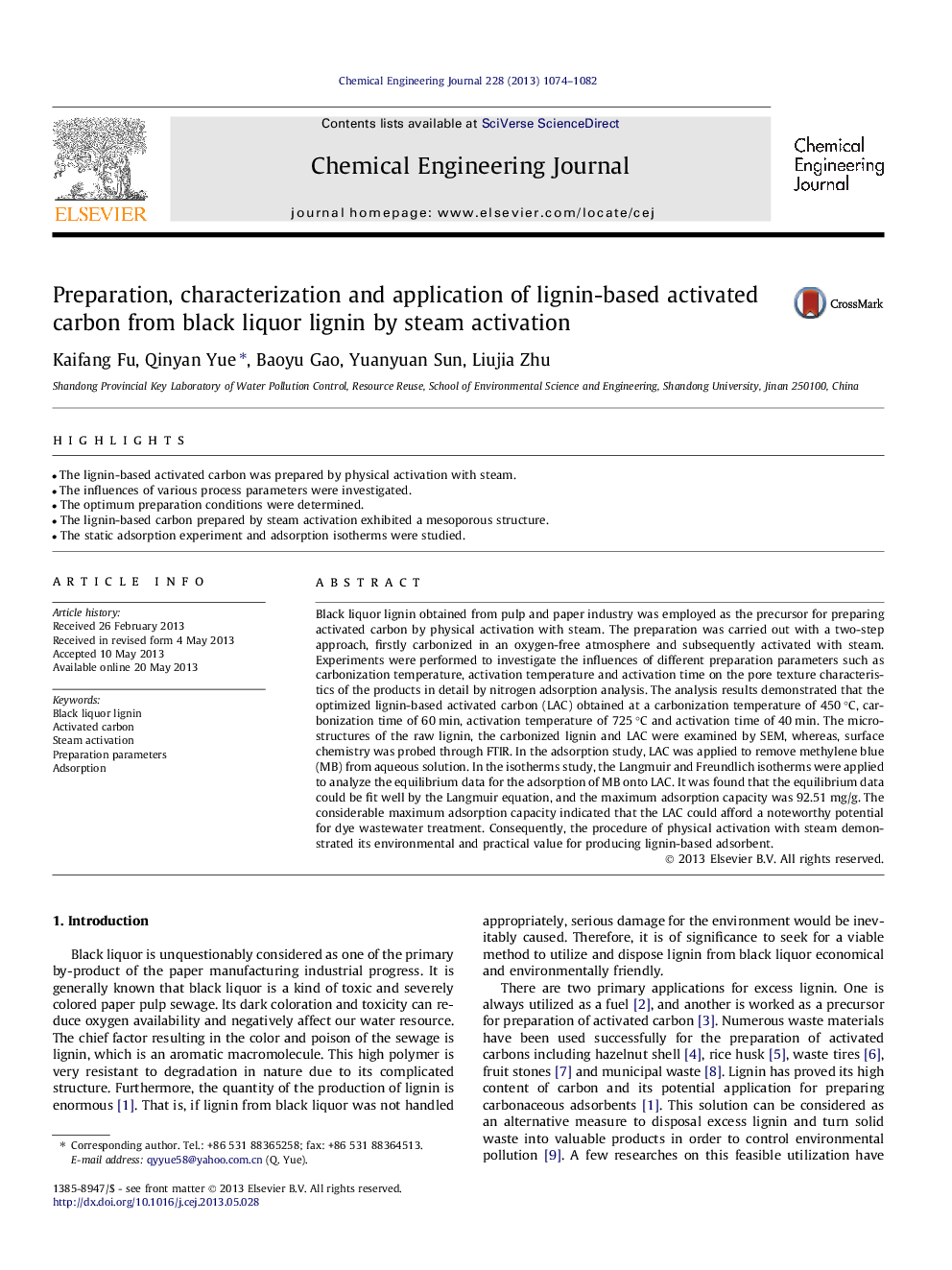| Article ID | Journal | Published Year | Pages | File Type |
|---|---|---|---|---|
| 6587730 | Chemical Engineering Journal | 2013 | 9 Pages |
Abstract
Black liquor lignin obtained from pulp and paper industry was employed as the precursor for preparing activated carbon by physical activation with steam. The preparation was carried out with a two-step approach, firstly carbonized in an oxygen-free atmosphere and subsequently activated with steam. Experiments were performed to investigate the influences of different preparation parameters such as carbonization temperature, activation temperature and activation time on the pore texture characteristics of the products in detail by nitrogen adsorption analysis. The analysis results demonstrated that the optimized lignin-based activated carbon (LAC) obtained at a carbonization temperature of 450 °C, carbonization time of 60 min, activation temperature of 725 °C and activation time of 40 min. The microstructures of the raw lignin, the carbonized lignin and LAC were examined by SEM, whereas, surface chemistry was probed through FTIR. In the adsorption study, LAC was applied to remove methylene blue (MB) from aqueous solution. In the isotherms study, the Langmuir and Freundlich isotherms were applied to analyze the equilibrium data for the adsorption of MB onto LAC. It was found that the equilibrium data could be fit well by the Langmuir equation, and the maximum adsorption capacity was 92.51 mg/g. The considerable maximum adsorption capacity indicated that the LAC could afford a noteworthy potential for dye wastewater treatment. Consequently, the procedure of physical activation with steam demonstrated its environmental and practical value for producing lignin-based adsorbent.
Related Topics
Physical Sciences and Engineering
Chemical Engineering
Chemical Engineering (General)
Authors
Kaifang Fu, Qinyan Yue, Baoyu Gao, Yuanyuan Sun, Liujia Zhu,
